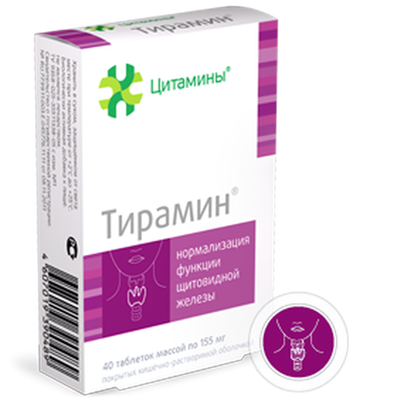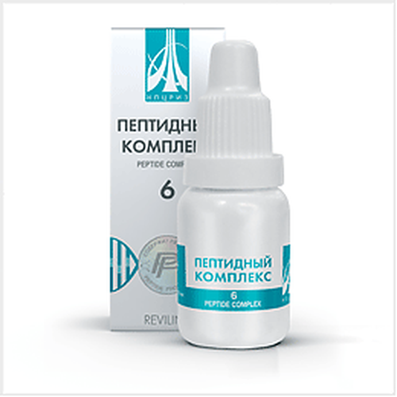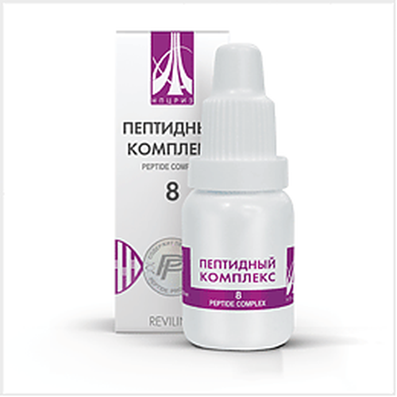Instruction for use: Ropivacaine
I want this, give me price
Latin name: Ropivacainum (genus. Ropivacaini)
Chemical name
(S) -N- (2,6-Dimethylphenyl) -1-propyl-2-piperidinecarboxamide
Gross formula
C17H26N2O
Pharmacological group:
Local irritants
The nosological classification (ICD-10)
R52 Pain, not elsewhere classified: Pain syndrome of radicular origin; Pain syndrome of small and medium intensity of different genesis; Pain syndrome after orthopedic surgery; Pain syndrome in superficial pathological processes; Radicular pain in the background of osteochondrosis of the spine; Radicular pain syndrome; Pleural pain; Chronic pain
R52.0 Acute pain: Acute pain syndrome; Acute pain syndrome with osteoarthritis; Acute pain syndrome of traumatic origin; Severe pain of a neurogenic nature; Severe pain; Pain syndrome at delivery
Z100.0 * Anesthesiology and premedication: Abdominal surgery; Adenomectomy; Amputation; Angioplasty of the coronary arteries; Carotid artery angioplasty; Antiseptic treatment of skin in wounds; Antiseptic treatment of hands; Appendectomy; Atheroctomy; Balloon coronary angioplasty; Vaginal hysterectomy; Venous bypass; Interventions on the vagina and cervix; Interventions on the bladder; Interference in the oral cavity; Reconstructive-reconstructive operations; Hand hygiene of medical personnel; Gynecological Surgery; Gynecological interventions; Gynecological operations; Hypovolemic shock during surgery; Disinfection of purulent wounds; Disinfection of the edges of wounds; Diagnostic Interventions; Diagnostic procedures; Diathermocoagulation of the cervix; Long-term surgeries; Replacement of fistulous catheters; Infection in orthopedic surgical interventions; Artificial heart valve; Kistectomy; Short-term outpatient surgery; Short-term operations; Short-term surgical procedures; Cryotyreotomy; Blood loss during surgical interventions; Bleeding during surgery and in the postoperative period; Laser coagulation Laserocoagulation; Laser retinopathy of the retina; Laparoscopy; Laparoscopy in gynecology; Likvornaya fistula; Small gynecological operations; Small surgical interventions; Mastectomy and subsequent plastic surgery; Mediastinotomy; Microsurgical operations on the ear; Mukinging operations; Suturing; Minor surgery; Neurosurgical operation; Eclipse of the eyeball in ophthalmic surgery; Orchiectomy; Pancreatectomy; Pericardectomy; The rehabilitation period after surgical operations; Reconvalence after surgical intervention; Percutaneous transluminal coronary angioplasty; Pleural Thoracocentesis; Pneumonia postoperative and post traumatic; Preparing for surgical procedures; Preparing for a surgical operation; Preparation of the surgeon's arms before surgery; Preparation of the colon for surgical interventions; Postoperative aspiration pneumonia in neurosurgical and thoracic operations; Postoperative nausea; Postoperative hemorrhage; Postoperative granuloma; Postoperative shock; Early postoperative period; Myocardial revascularization; Resection of the apex of the tooth root; Resection of the stomach; Bowel resection; Resection of the uterus; Liver resection; Small bowel resection; Resection of a part of the stomach; Reocclusion of the operated vessel; Gluing of tissues during surgical interventions; Suture removal; Condition after eye surgery; Condition after surgery in the nasal cavity; Condition after gastrectomy; Condition after resection of the small intestine; Condition after tonsillectomy; Condition after removal of duodenum; Condition after phlebectomy; Vascular Surgery; Splenectomy; Sterilization of surgical instrument; Sterilization of surgical instruments; Sternotomy; Dental surgery; Dental intervention on periodontal tissues; Strumectomy; Tonsillectomy; Thoracic surgery; Total gastrectomy; Transdermal intravascular coronary angioplasty; Transurethral resection; Turbinectomy; Removal of a tooth; Cataract removal; Removing Cysts; Removal of tonsils; Removal of myoma; Removal of mobile milk teeth; Removal of polyps; Removal of a broken tooth; Removal of the uterus; Removal of seams; Urethrotomy; Fistula of the luminal ducts; Frontoetmoidogamotomy; Surgical infection; Surgical treatment of chronic ulcers of extremities; Surgery; Surgery in the anus; Surgery on the large intestine; Surgical practice; Surgical procedure; Surgical interventions; Surgical interventions on the digestive tract; Surgical interventions on the urinary tract; Surgical interventions on the urinary system; Surgical interventions on the genitourinary system; Surgical intervention on the heart; Surgical procedures; Surgical operations; Surgical operations on veins; Surgical intervention; Vascular Surgery; Surgical treatment of thromboses; Cholecystectomy; Partial resection of the stomach; Extraperitoneal hysterectomy; Percutaneous transluminal coronary angioplasty; Percutaneous transluminal angioplasty; Coronary artery bypass grafting; Extirpation of the tooth; Extirpation of infant teeth; Extirpation of pulp; Extracorporeal circulation; Extraction of the tooth; Extraction of teeth; Extraction of cataracts; Electrocoagulation; Endourological interventions; Episiotomy; Ethmoidotomy; Complications after tooth extraction
Z40 Preventive Surgery: Inhalational Anesthesia; Intratracheal Intubation; Intubation of the trachea; Surface anesthesia in ophthalmology
CAS code
84057-95-4
Pharmacology
Pharmacological action - local anesthetic.
Reversibly blocks the potential-dependent sodium channels, prevents the generation of pulses in the endings of the sensory nerves and their conduction along nerve fibers. If it enters the systemic circulation, it has a depressing effect on the central nervous system and myocardium (reduces excitability and automatism, slows down the conductivity).
The time of onset and duration of local anesthesia depend on the route of administration and dose and are, respectively: with epidural anesthesia at the lumbar and thoracic level - 10-20 min and 3-5 h (0.75% solution) or 4-6 h (1% solution); with conduction and infiltration anesthesia - 1-15 min and 2-6 h (0.75% solution); with blockade of large plexus plexus (humeral plexus) - 10-25 min and 6-10 h (0.75% solution). Analgesic effect with epidural administration at the lumbar level (bolus injection) is achieved in 10-15 minutes and remains 0.5-1.5 hours, with conductive and infiltration anesthesia - after 1-5 minutes and last 2-6 hours (0.2 % solution).
The distribution coefficient of n-octanol / phosphate buffer (pH 7.4) is 141, pKa is 8.1. The concentration in the plasma depends on the dose, the mode of administration and the vascularization of the injection site. Completely absorbed from the epidural space, the absorption has a two-phase character with T1 / 2 - 14 minutes and 4 hours, respectively. In plasma, it binds mainly to acidic glycoproteins. Plasma clearance - 440 ml / min, the volume of distribution - 47 liters. Passes through GEB, the placental barrier and penetrates into breast milk (in small amounts). Biotransformed mainly by hydroxylation, the main metabolite is 3-hydroxypyvacaine. The final T1 / 2 is 1.8 hours. About 86% of the IV dose is excreted in the urine in the form of metabolites (73% - conjugated 3-hydroxyropivacaine) and 1% - unchanged.
Application of the substance Ropivacaine
Local anesthesia: epidural, incl. at caesarean section, conductor (including large nerves and plexuses), infiltration; relief of acute pain syndrome (including postoperative analgesia and analgesia of childbirth).
Contraindications
Hypersensitivity, age to 12 years (there is a lack of sufficient number of clinical observations).
Restrictions on the use
Blockade of the heart (partial or complete), cirrhosis, renal failure.
Application in pregnancy and lactation
With caution in pregnancy and breast-feeding (penetrates into breast milk). The application for anesthesia or analgesia in obstetrics is justified.
The action category for fetus by FDA is B.
Side effects of the substance Ropivacaine
Hypo- or hypertension, brady or tachycardia, headache, dizziness, paresthesia, neuropathy, impaired spinal cord function (anterior dorsal artery syndrome, arachnoiditis), nausea, vomiting, chills, fever, urinary retention, allergic reactions (in t anaphylactic shock).
Interaction
Strengthens the toxic effect of other local anesthetics and drugs, similar in structure to local anesthetics of the amide type. Strengthens (mutually) the action of funds that depress the central nervous system.
Update of information
Interaction with inhibitors of CYP1A2
Isozyme CYP1A2 cytochrome P450 is involved in the formation of the main metabolite of ropivacaine - 3-hydroxypyvacaine. In vivo, the combined use of ropivacaine and a selective potent inhibitor of CYP1A2-fluvoxamine (25 mg twice daily for 2 days) reduced the plasma clearance of ropivacaine by 70%. Thus, strong inhibitors of CYP1A2, such as fluvoxamine, can simultaneously interact with ropivacaine, leading to an increase in plasma levels of ropivacaine. Caution should be exercised when combining ropivacaine with CYP1A2 inhibitors.
Interaction with other drugs
It is advisable to use caution when combined with ropivacaine and antiarrhythmic drugs of the III class (for example amiodarone) - it is possible to strengthen cardiodepressive action.
With the combined use of ropivacaine and strong inhibitors of CYP1A2 (eg fluvoxamine), an increase in the level of ropivacaine in plasma is possible; Care should be taken.
Perhaps the interaction of ropivacaine with drugs known to be metabolized by CYP1A2 (such as theophylline and imipramine), due to competitive inhibition of metabolism.
In in vivo studies, the combined use of a selective potent inhibitor of CYP3A4-ketoconazole (100 mg twice daily for 2 days followed by infusion of ropivacaine 1 hour after ketoconazole) caused a 15% decrease in plasma clearance of ropivacaine.
Pharmaceutical interaction: increasing the pH of the solution above 6.0 can lead to the formation of precipitate due to the poor solubility of ropivacaine under these conditions.
Overdose
Symptoms: impaired vision and hearing, hypotension, arrhythmia, dysarthria, increased muscle tone, muscle twitching; with the progression of intoxication: loss of consciousness, convulsions, hypoxia, hypercapnia, respiratory and metabolic acidosis, dyspnea, apnea, cardiac arrest.
Treatment: discontinuation of administration, maintenance of adequate oxygenation, relief of convulsions and convulsions (administration of thiopental 100-120 mg IV or diazepam 5-10 mg IV); if necessary, ventilator (after the onset of ventilation, suxamethonium can be administered), normalization of blood circulation, correction of acidosis; with the development of hypotension and bradycardia - the administration of ephedrine 5-10 mg IV (possibly again after 2-3 minutes).
Routes of administration
Parenteral.
Precautions for the substance Ropivacaine
Patients with severe liver disease need to reduce repeated doses. It should be borne in mind that ropivacaine disrupts motor functions, coordination of movements and reaction speed. Therefore, after its application, a period of time after which the patient can perform work that requires increased attention is determined by the doctor.
When carrying out a prolonged blockade (infusion or repeated bolus administration), toxic concentrations of anesthetic in the blood and local nerve damage can be created.
Special instructions
Prior to the initiation of anesthesia, intravenous catheters should be installed and resuscitation equipment should be available. Before and during the injection (at a speed of 25-50 mg / min), an aspiration test (to prevent intravascular entry of a solution that can be recognized by increasing heart rate) is necessary.

 Cart
Cart





